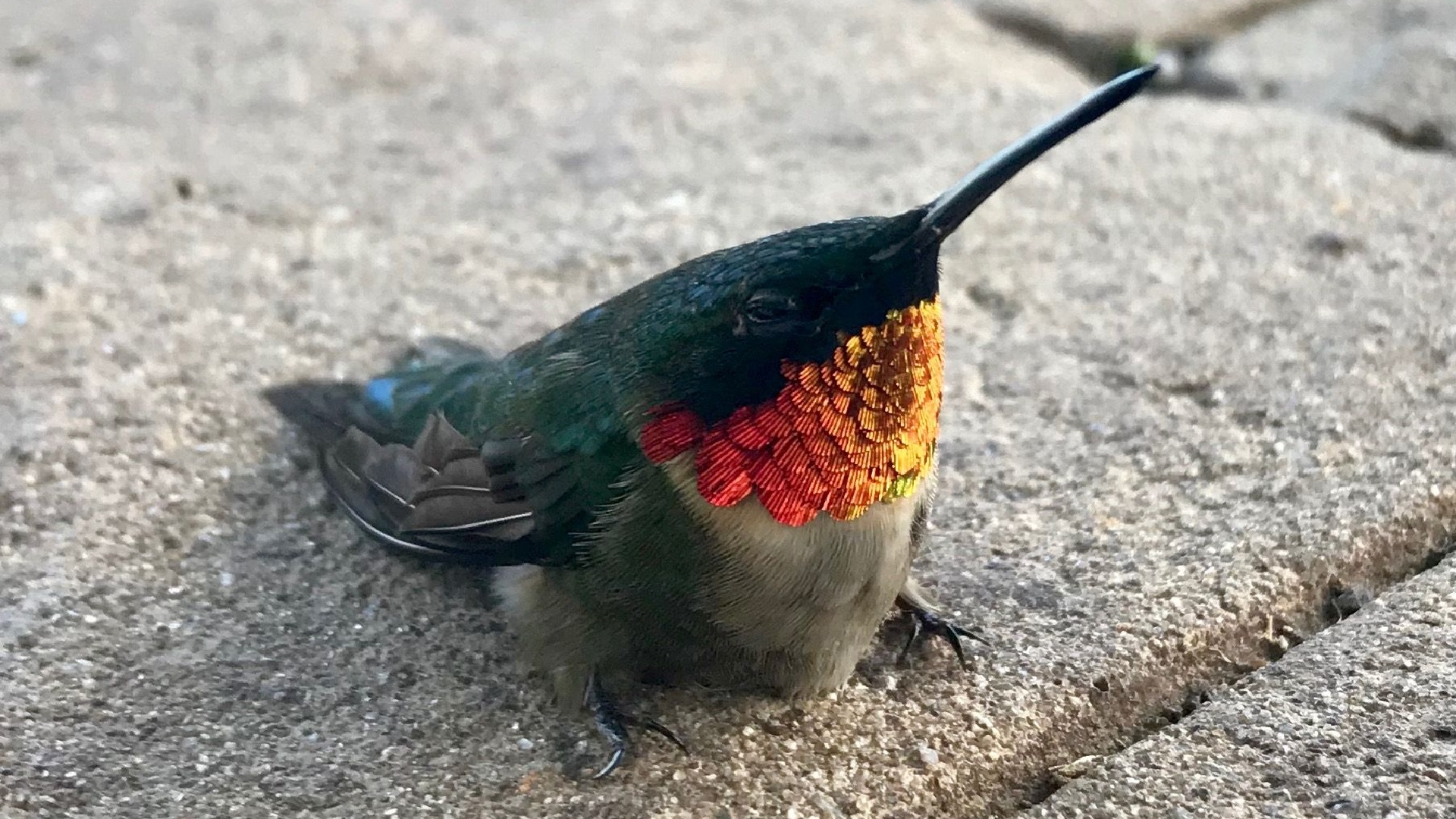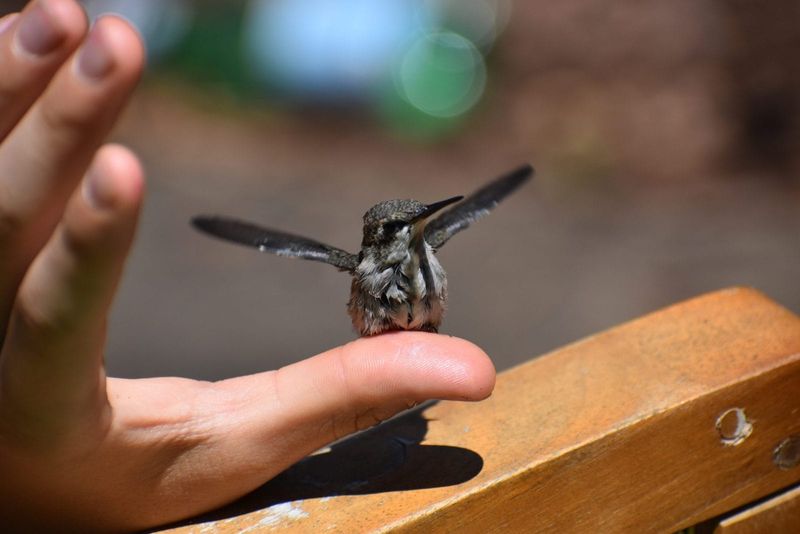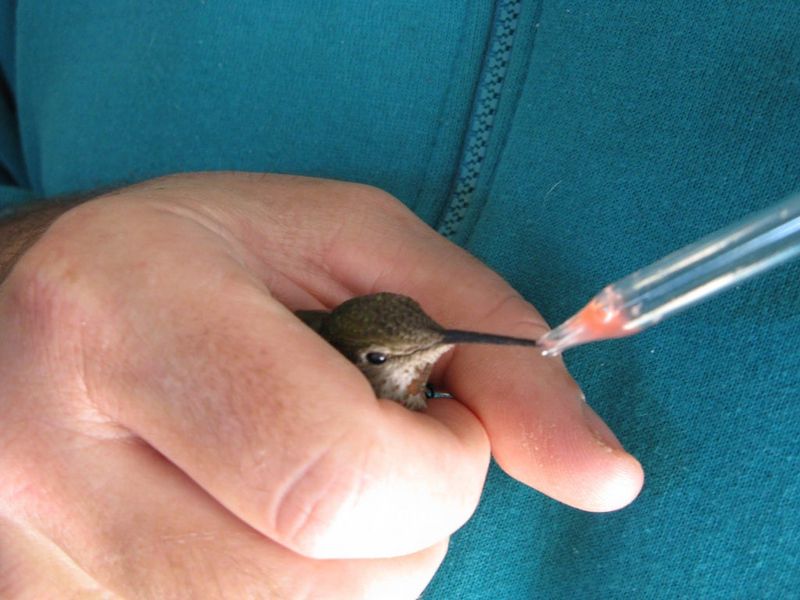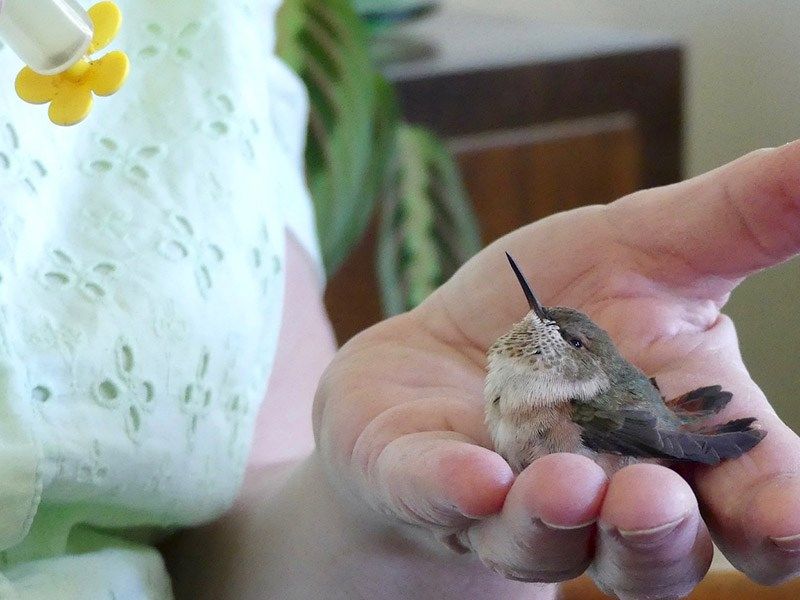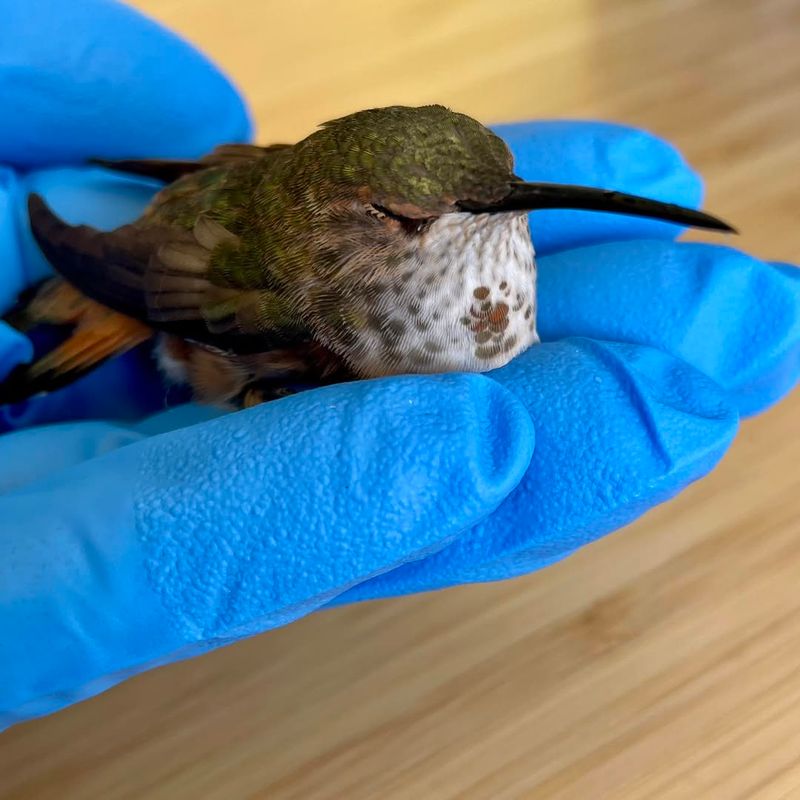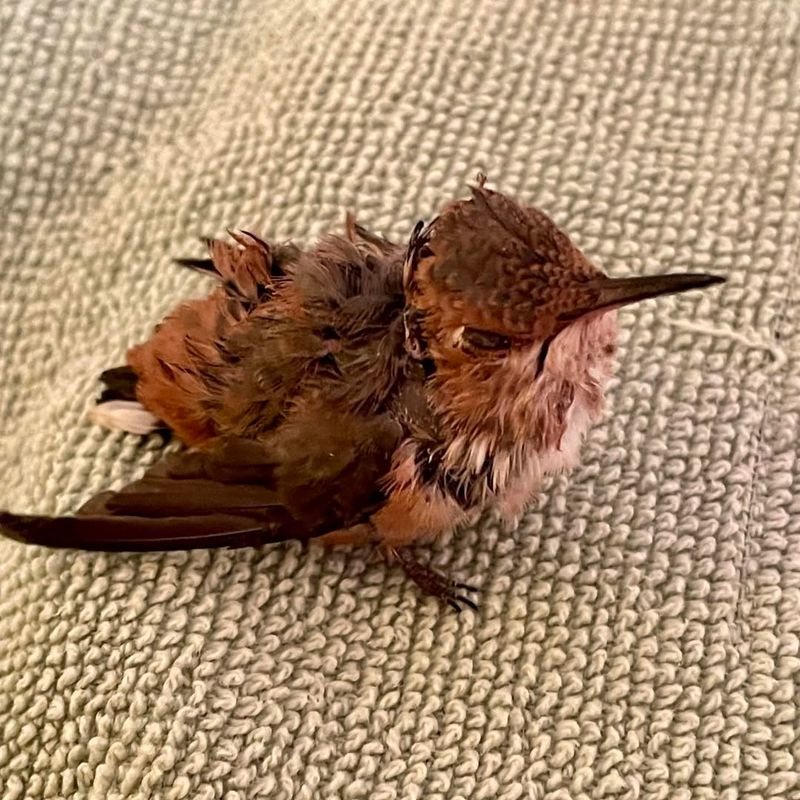Spotting a hummingbird on the ground can stop you in your tracks. These high-speed jewels of the sky aren’t built for crash landings, and when they’re down, something’s off.
One wrong move could do more harm than good, even if your heart’s in the right place. Know what to do—and what to skip—before good intentions backfire.
1. Approach With Extreme Caution
Move slowly toward the hummingbird to avoid frightening it further. These tiny birds have incredibly fast metabolisms and stress can quickly deplete their already limited energy reserves.
Observe from a short distance first to determine if the bird appears injured or is simply resting. Sometimes hummingbirds take brief breaks on low perches, which might look concerning but is actually normal behavior.
If the bird doesn’t fly away after a minute or two of your presence, it likely needs assistance. Their hearts beat up to 1,260 times per minute, burning energy rapidly even at rest.
2. Create A Safe Temporary Shelter
Grab a small box with air holes and line it with a soft cloth or paper towels. Avoid using towels with loops that could trap the bird’s delicate feet or beak as they try to free themselves.
Gently scoop the hummingbird using a soft cloth or wearing thin gloves – never grab with bare hands. Their bones are incredibly fragile, thinner than toothpicks, and can break with the slightest pressure.
Place the box in a quiet, warm (about 80°F), dark area away from children and pets. Darkness helps reduce stress while they recover.
3. Offer Emergency Sugar Water
Mix one part white sugar with four parts water and let it cool completely. Avoid honey or artificial sweeteners as they can be deadly to hummingbirds – honey can cause a fatal fungal infection called candidiasis.
Place the solution in a clean bottle cap or small container inside the box. You can also use a small syringe (without needle) to carefully offer drops near their beak, but never force-feed.
This emergency fuel can help revive an exhausted hummingbird within minutes. Their metabolism is so rapid that they can starve to death within 3-5 hours without food.
4. Contact A Wildlife Rehabilitator Immediately
Don’t try to care for the hummingbird longer than a few hours. These specialized birds need expert care that most people simply cannot provide at home, no matter how well-intentioned.
Search online for “wildlife rehabilitator near me” or contact your local Audubon Society, wild bird store, or veterinarian for referrals. Many states have hotlines specifically for wildlife emergencies that operate 24/7.
While waiting for professional help, keep the environment quiet and stress-free. Even talking loudly near the recovery box can cause harmful stress to these sensitive creatures.
5. Know When To Step Back
Sometimes a hummingbird might appear injured when it’s actually a fledgling learning to fly. Young hummingbirds spend days on the ground or low branches while developing flight muscles, with parents feeding them regularly.
If you spot a baby hummingbird that seems alert but isn’t flying, watch from a distance for about 30 minutes. Parent birds are likely nearby but won’t approach if humans linger too close.
Adult birds that quickly recover after sugar water and can perch strongly may be released in a safe area near flowers. True rescues need intervention, but unnecessary human contact should always be minimized.

